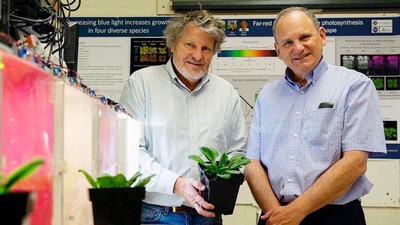USU Aviation Students Participate in Oxygen Deprivation Training
Students in Utah State University’s professional pilot program in the College of Agriculture and Applied Sciences recently experienced oxygen deprivation as part of a unique training opportunity.
The training allowed participants to experience symptoms that accompany loss in cabin pressure. Using a Portable Reduced Oxygen Training Enclosure (PROTE) provided by the FAA Civil Aerospace Medical Institute, students felt the effects of both hypoxia and spatial disorientation.
“When you are at 40,000 feet there’s like no oxygen in the atmosphere and your brain just can’t function,” said Jake Craig, a senior in USU’s professional pilot program. “When a plane loses cabin pressure it also loses oxygen really quickly. Pilots only have a couple useful seconds to realize it and take steps to correct it, or their hypoxic state could be fatal.”
The PROTE simulates changes in altitude by reducing oxygen levels inside the chamber. Surrounded by thick plastic walls, the simulator contains six chairs and six oxygen masks. A machine attached the room regulates its oxygen level.
The goal of the simulator is to educate pilots on signs of oxygen deprivation.
“Every pilot responds to hypoxia differently,” Craig said. “I wanted to know what symptoms I should look for in myself so if it ever happens in real life, I have a better chance of correcting it.”
In addition to USU students, pilots throughout the state attended the training at South Valley Regional Airport. Before entering the PROTE, pilots were required to take a short training course.
“We sat down in a classroom with an FAA instructor for a presentation on the what and why of hypoxia,” said Taylor Loosli, a freshman in the professional pilot program.
While in the simulator, pilots were asked to complete simple tasks.
“Some people lasted two or three minutes, and some were able to continue in the room for the maximum of five minutes,” Loosli said. “I felt lightheaded and had somewhat of a headache. But I was able to sit in the room for almost four minutes before my oxygen level reached about 53 percent and I had to put on my oxygen mask.”
In the past, USU students have traveled across the country to receive this type of training.
Loosli said the portable chamber reminded him that flying is dangerous.
“Overall, it was a great experience,” Loosli said. “It helped me realize and remember that piloting is a serious venture and precautions must be taken to maintain safety and security while in the air.
Related links:
USU Aviation Technology — Professional Pilot Program
USU College of Agriculture and Applied Sciences
Contact: Taylor Adams, 435-797-7091, taylor.adams@usu.edu
Writer: Dawn Otterby, 435-797-7091, dawn.otterby@usu.edu
USU has been training pilots since 1939 and continues to pioneer efforts to train the next generation of professional aviators.
Continually monitored, professional pilot students had the chance to experience oxygen deprivation.
TOPICS
Aerospace 80storiesComments and questions regarding this article may be directed to the contact person listed on this page.

.jpg)





